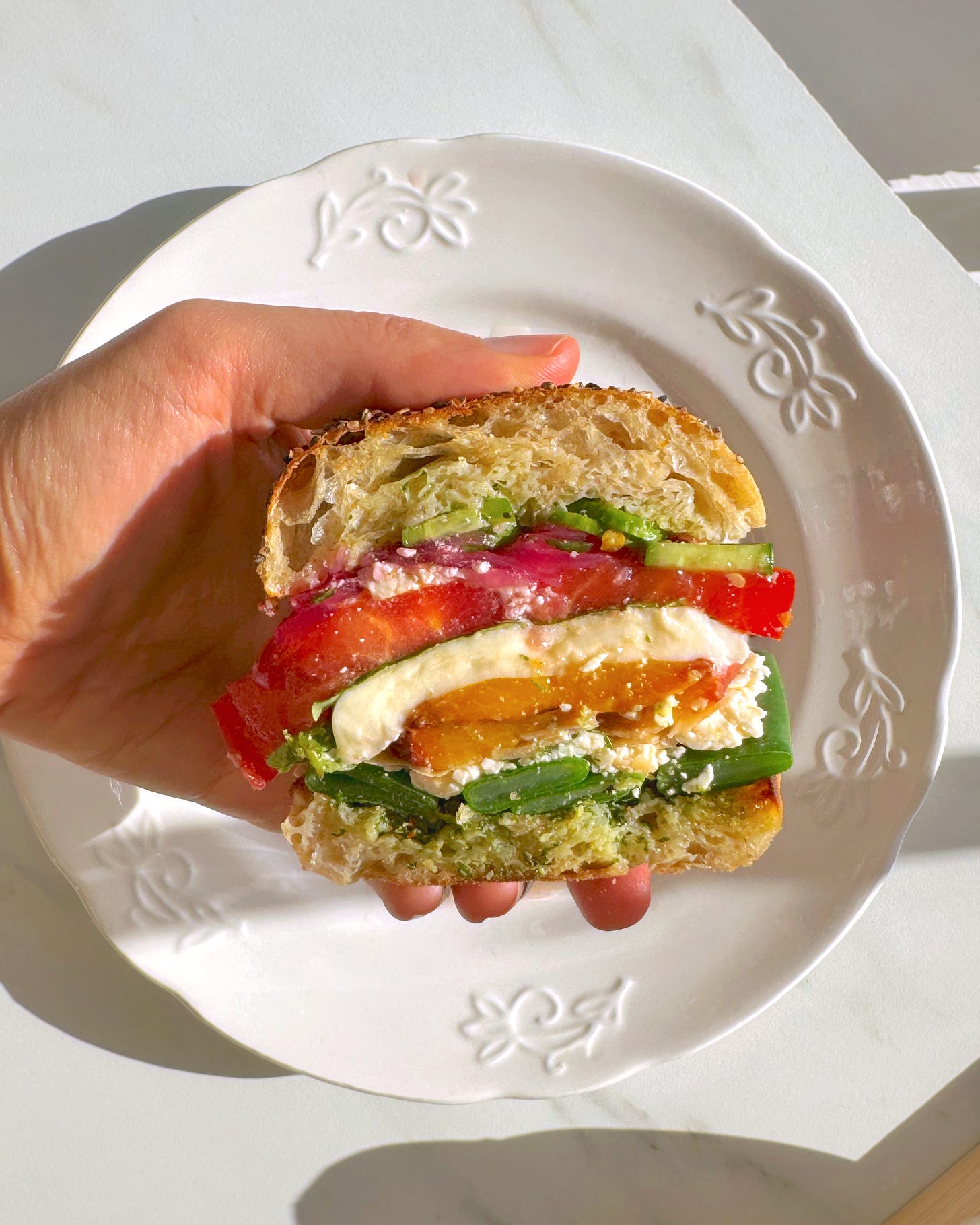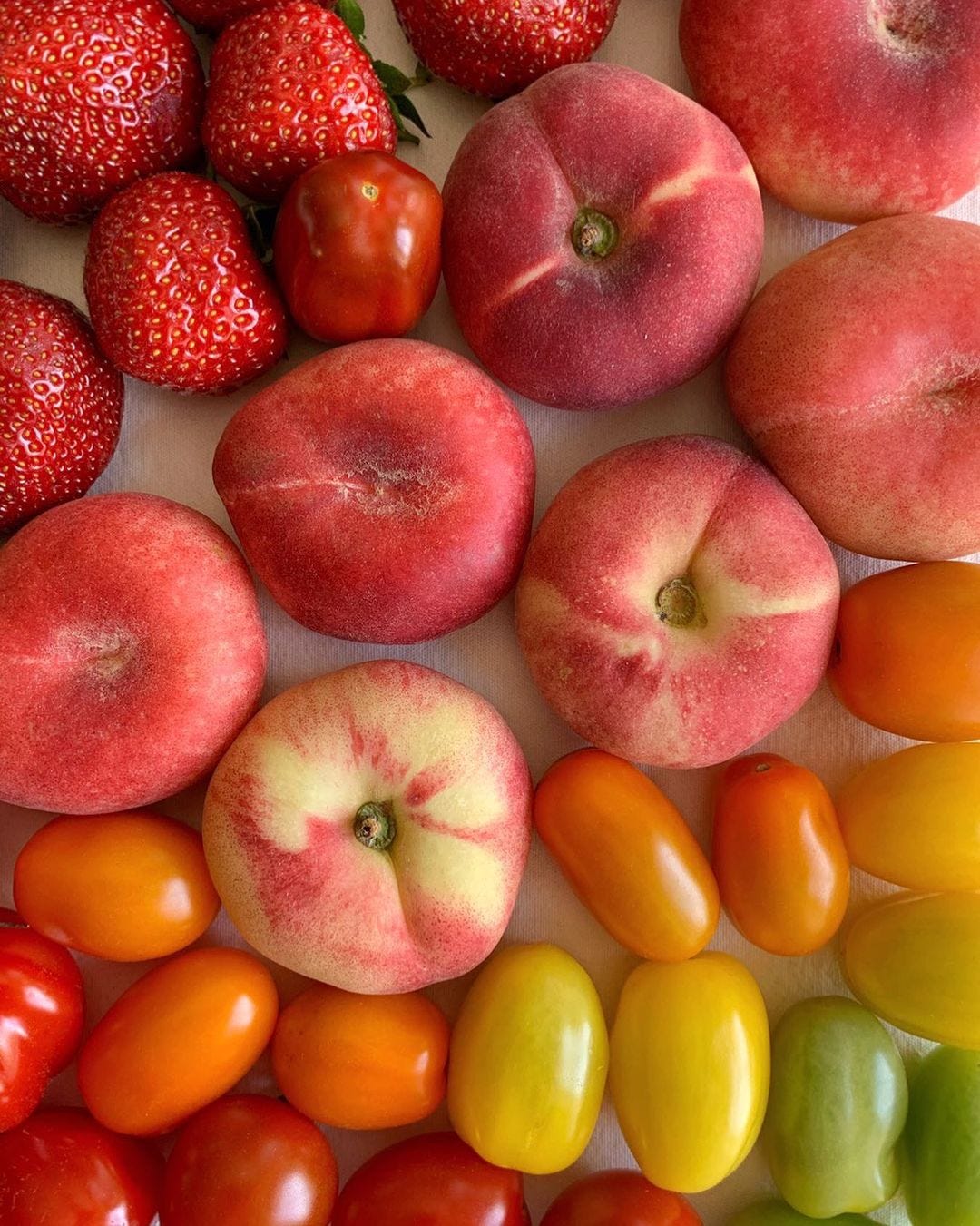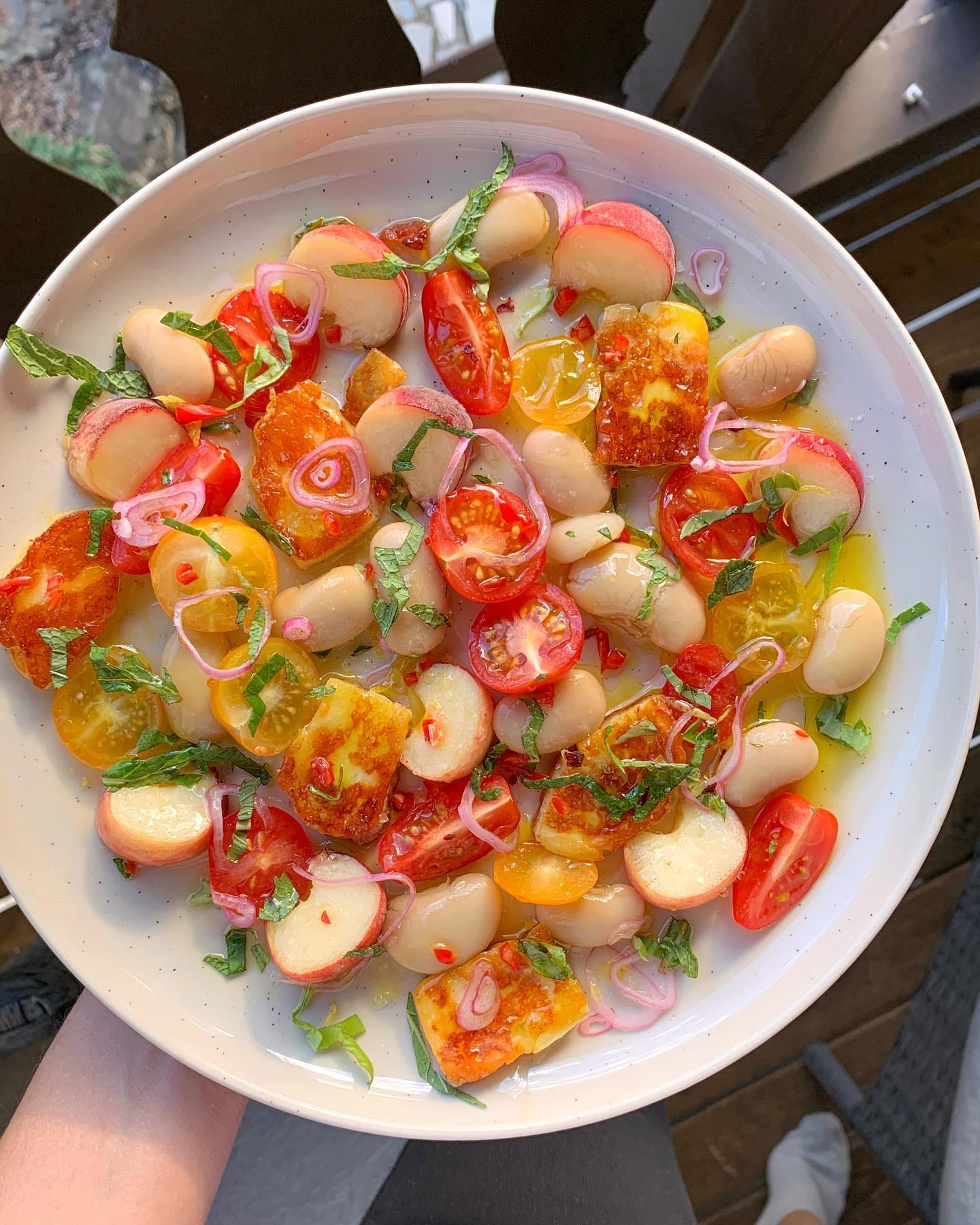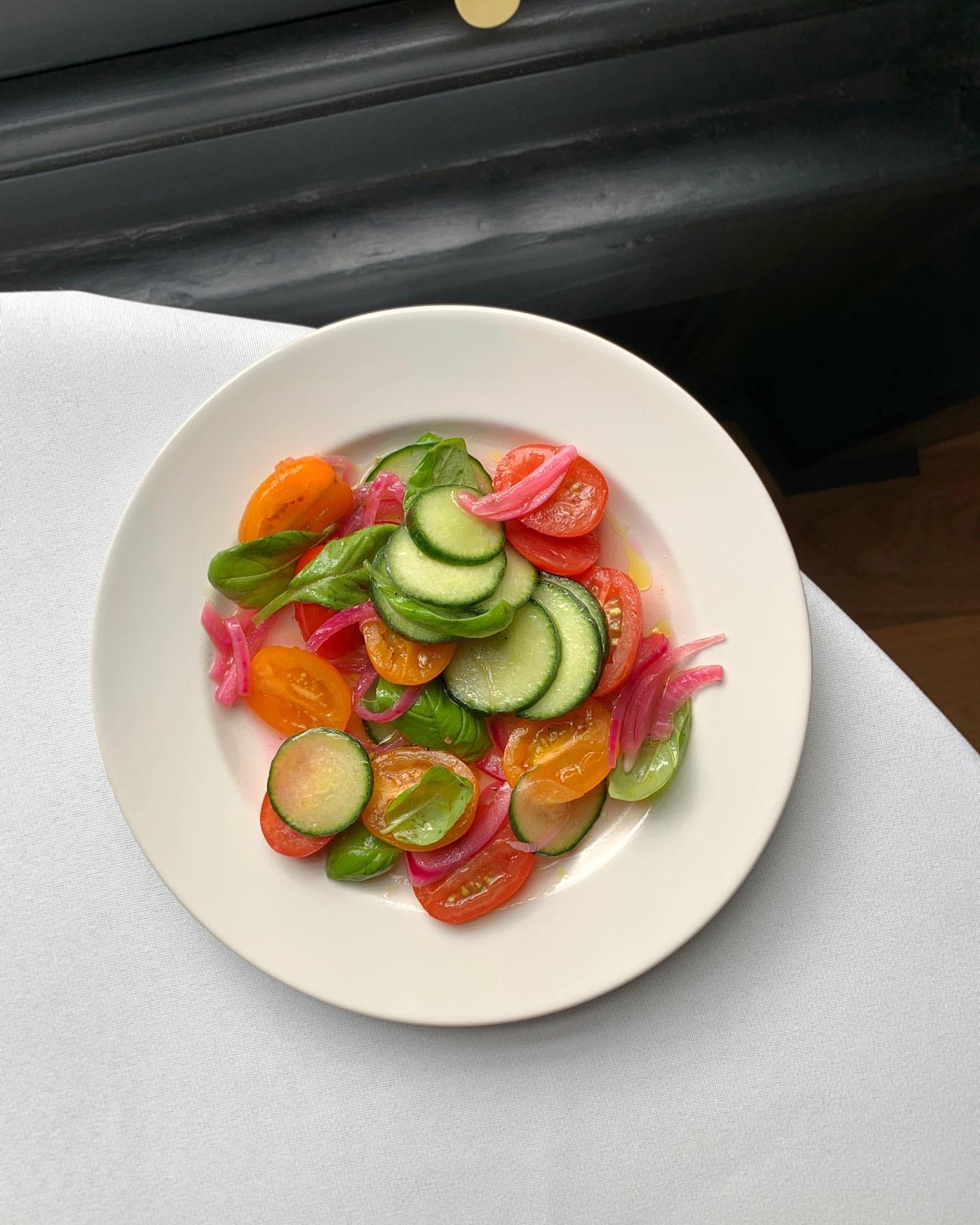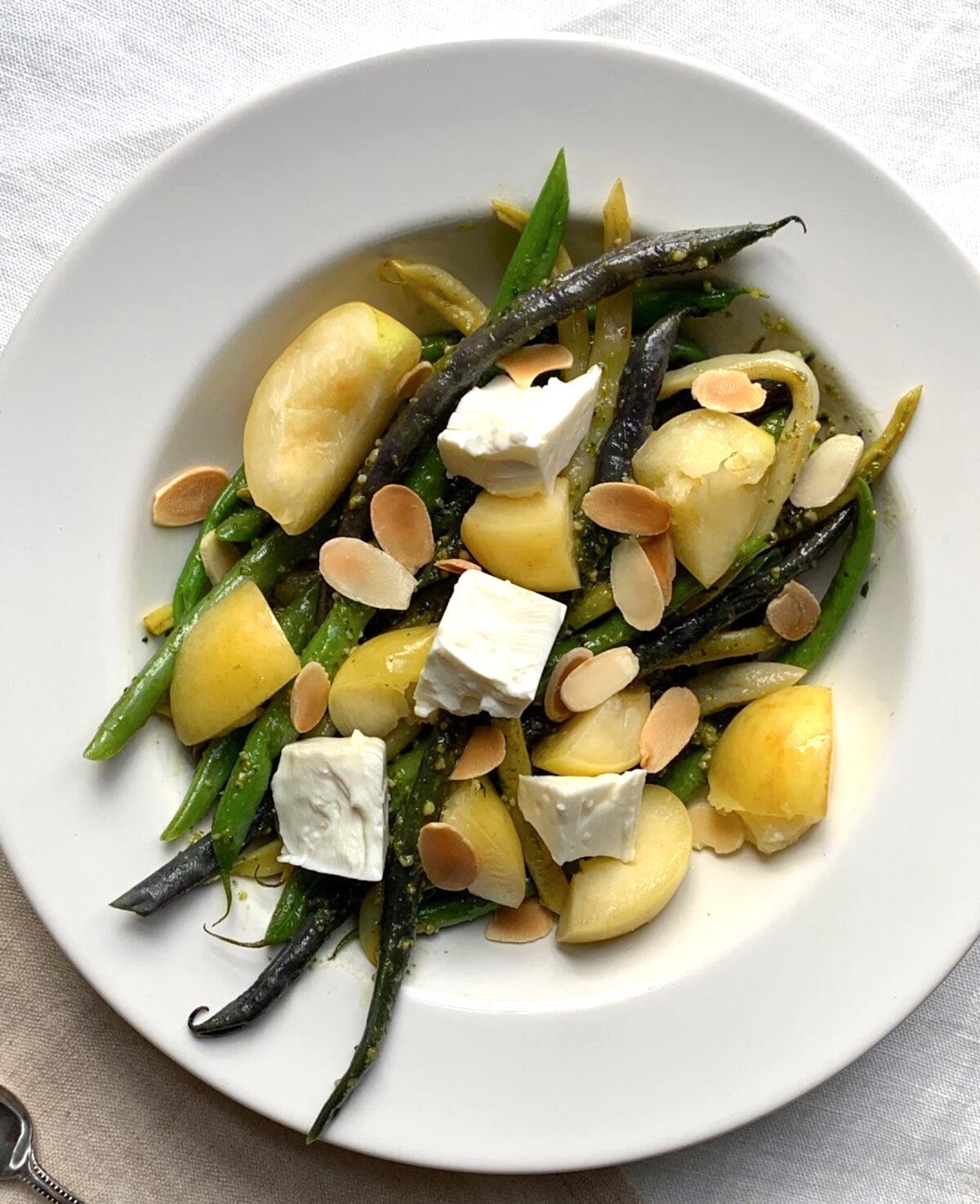👋+: A Seriously Summery Sandwich
a rainbow of produce + should you be washing fruit and veg?
Allô! 👋
Welcome (back) to seasonal sundays, the weekly-ish supplement to good food at home, where we take a closer peek at produce at its peak — with a short introduction, a recipe, and a (sometimes related) cooking Q&A. If you’re a new subscriber and would like to read the previous issues, you can click here to find them!
Happy Sunday!
I hope you’ve been enjoying these bountiful dog days of summer, basking in the comforting knowledge that, right now, good food is all around. It’s peak produce season, baby!
On today’s newsletter menu, we’ve got an introduction on how to shop for and store a few mid-summer fruit and vegetables, followed by my currently-eating-on-repeat recipe for a sandwich that packs in a rainbowful of flavours; and, to finish, a little Q&A on whether or not you should be washing your fruit and veg.
Hope you enjoy the tips and tidbits!
Wishing you all a beautiful day, and lots of gorgeous meals ahead
— Simone
As mid-summer comes with an abundance of produce, I thought this week might be a good time to take a closer look at how to best shop for and store what’s currently at its best.
HOW TO SHOP FOR & STORE: TOMATOES 🍅
Today, most tomatoes sold in supermarkets were bred for profit over pleasure — this means that they travel well and last a long time on a shelf, but often don’t carry much flavour. So, if what you’re after is a deeply flavoursome fruit with tender, juicy flesh, you may want to try to avoid such “big brand” tomatoes. Signs that a tomato will be tasty include its weight (should be heavy for its size), colour (should be quite saturated, whether it is red, yellow, orange, green, or dark purple), firmness (put on Goldilocks’ shoes while you hold it: you don’t want it to be too hard or too soft, you simply want it just right), and scent (it should be intoxicating!). A bit of scarring on a tomato is usually fine, but black spots are undesirable (and open blemishes and cracks in the flesh are potential entryways for pathogens) so do be mindful of that.
Large and medium tomatoes should be stored stem-side down in a cardboard punnet or dishtowel-lined container, in one layer, at room temperature, and out of direct sunlight — same goes for smaller cherry and grape varieties, though they can be stacked onto each other in a big pile if not tethered to their vines*. Eat within 3 days or so, or cook then refrigerate to store for longer. Once cut, raw tomatoes should also be stored in the refrigerator. Any slightly unripe or overripe tomatoes will be better suited for cooking as opposed to enjoying raw, or for dehydrating in a low oven (the dried tomatoes can then be stored in olive oil, or ground up with salt to make a wonderfully savoury condiment).
*I hope you’ve got spare room on your countertops; if not, fresh produce does make for wonderful decoration on tabletops around the home (just keep them out of bathrooms and bedrooms, please)
HOW TO SHOP FOR & STORE: STONE FRUIT 🍑
With peaches, plums, nectarines, apricots and the like, you’ll want to look for vibrantly-hued fruit with intact skin. Depending on when you’re planning to eat them (or if you want to cook them vs. enjoy them raw), you may want to buy slightly unripe fruit that will last a little while on a countertop or that can better hold their shape when baked — in which case, look for fairly firm fruit, a bit pale but not green, with an unbudging stem. If you want to enjoy them raw and ASAP (As Soon As Polite; please don’t go chomping on anything before you’ve paid for it, no matter how alluring the aroma), go for heavy fruit with a slight give to their flesh, a strong fruity fragrance, and stems and leaves that can easily be nudged off. If the fruit is very soft, it is likely overripe: perfect for a crisp, crumble, cobbler, or buckle. Note that if your stone fruit are firm yet wrinkly, this is likely a sign that they were picked too early and then chilled for long-haul shipping: they may taste okay, but in the end they won’t be quite the same as the real sun-ripened deal.
Aside from cherries which fare well in the refrigerator, stone fruit are best stored at room temperature. Slightly unripe fruit will benefit from being placed in a brown paper bag, while perfectly ripe fruit should be kept uncovered and in a single layer for no more than 2-3 days. Any fruit that you know you can’t get to within a reasonable time frame can be cooked into compotes or jam and/or frozen for later.
HOW TO SHOP FOR & STORE: FRESH (UNCURED) ONIONS ✨
Look for firm onions with shiny, vibrantly hued, soft skins and perky green tops that can mostly stand upright by themselves. It probably goes without saying, but you’ll want to avoid any onions that are slimy, dented, or seriously discoloured. Separate and use the scallion-like tops first as they are quick to yellow and wither (they can be used exactly like you would green onions), then, if planning on using within a few days, store the fresh onions in a basket, or a rack, or in a hanging mesh bag placed in a cool, dark place with good air flow — or, if you want them to keep for more than a week, simply pop them into the refrigerator.
Uncured onions won’t last as long as the dried ones we’re used to seeing year-round (that’s the price you pay for a juicier, fresher product!), so you’ll want to use them use within a week or two of refrigerating. If you can’t get to them right away, consider frying them up (or even caramelising them) in a big batch, then freezing them for later.
HOW TO SHOP FOR & STORE: CUCUMBERS 🥒
Ripe cucumbers should be very firm, though not hard, and fairly uniform in colour, a nice, vibrant shade of dark green (this last factor depends on the variety but, generally, the paler a cucumber gets, from light green all the way to yellow, the older it is, which usually means it’ll have thicker skin, a more bitter flesh, and tougher seeds). Any wrinkly cucumbers you find have probably been sitting for a while post-harvest, but they should still be fine to eat if unblemished: simply refresh in ice water for 20-30 minutes before enjoying. Also good to know is that smaller cucumbers tend to be crisper/crunchier and more pleasant than larger ones, so don’t be tempted to think that bigger is always better.
You can store cucumbers in the refrigerator in a resealable container or wrapped for up to a week or so (once cut, make sure the cut face is completely sealed away from air), or, if you know you won’t be able to get to the cucumber in time, consider making pickles! Alone or with herbs and spices, in a sweet vinegar brine or lacto-fermented in a simple salt solution.
HOW TO SHOP FOR & STORE: BEANS 💜
Wax beans, flat beans, string beans, purple beans. All should be firm and look like they would snap if bent (though please don’t snap before you buy!), with a uniform colour and relatively thin, taut skin. Avoid any bumpy, dry, or tough-skinned beans and, if you can, buy untrimmed beans as these usually last longer (the very tips are also a good indicator of freshness, as they will be the first part of the bean to go soft, dry, and brown post-harvest). Spotty beans should generally be avoided, though limp ones will usually do just fine in a cooked dish and can be sometimes be shocked back to life in ice water.
To store, keep in a loosely wrapped bag or partially-closed container in the fridge (the aim is to keep exposure to dry refrigerator air minimal while also reducing the risk of trapping in too much moisture) and use within 5 days or so. If you know you won’t be able to get to your beans before they are suitable only for the compost heap, consider blanching them in salted water then cutting them into thirds before popping them into the freezer for another day.
Keep reading with a 7-day free trial
Subscribe to good food at home to keep reading this post and get 7 days of free access to the full post archives.





